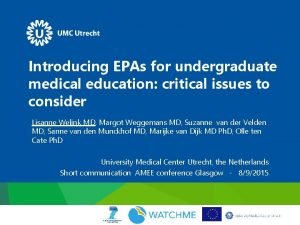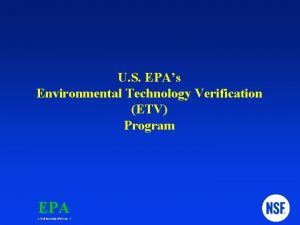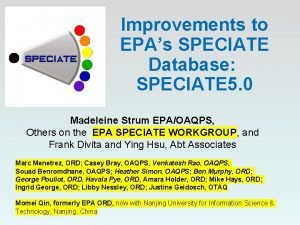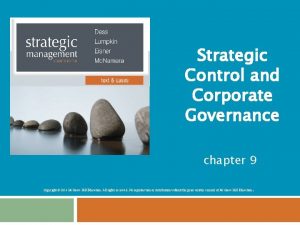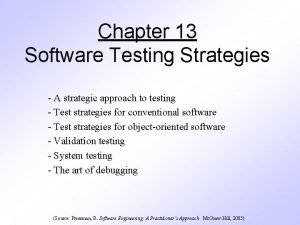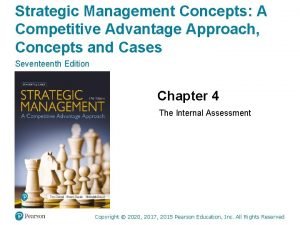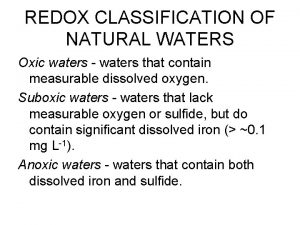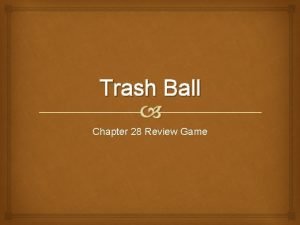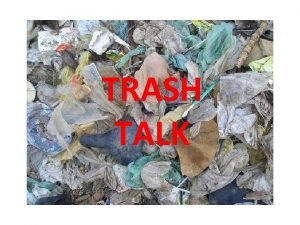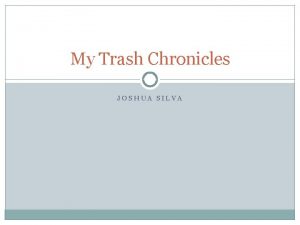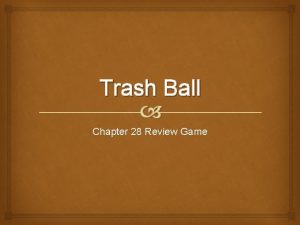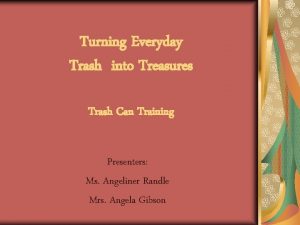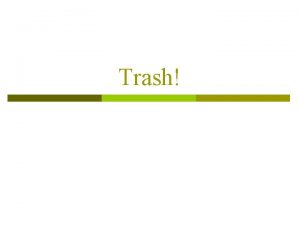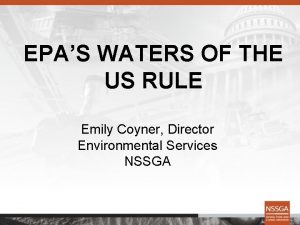EPAs Trash Free Waters Program A strategic approach













- Slides: 13

EPA’s Trash Free Waters Program A strategic approach to reduce trash in aquatic ecosystems

Aquatic Trash � Aquatic trash is a pervasive global problem affecting watersheds, estuaries, coastal waters, and the open oceans. � Potential economic, aesthetic, ecological and human health impacts. � Approximately 80% of aquatic trash comes from land-based sources. � Macro-, micro- and nano-scale problem.

A Costly and Pervasive Pollution Problem in the United States ● Over 51 billion pieces of litter end up on US roads each year, with annual litter cleanup costs in the U. S. approaching $11. 5 billion. (KAB) ● Local governments spend millions of dollars every year cleaning up litter. L. A. County spends over $18 million annually to clean up and prevent litter (Inside Solid Waste, 2011).


Plastic Trash ● Plastic is estimated to make up 60 -80% of ocean trash. Microplastics are ubiquitous. Eight million tons of plastic enter the ocean annually. ● Durable plastic packaging is used for many shortterm, single-use purposes. ● Plastic aquatic trash may be a vector for the transfer of Persistent Bio-accumulative and Toxic chemicals, invasive species, or disease organisms. ● Microplastics (less than 5 mm in diameter) may be ingested by aquatic organisms and interfere with digestion or nutrient absorption. ● Microplastics may contain toxic chemicals as part of the original plastic material (e. g. , dyes) or may adsorb environmental contaminants such as PCBs.

Aquatic Trash from Land Sources: Growing International and U. S. Attention and Calls for Action • Global Nexus – UNEP Global Program of Action, Cartagena Land-Based Sources Protocol, Global Partnership for Marine Litter, G 7 Marine Litter Commitments, Ocean Conservancy Trash Free Seas Alliance. • ‘Our Oceans’ conferences – Multi-nation events identified the growing marine trash problem as an international priority; the third conference was hosted by the U. S. in September 2016. • Public Opinion – Fast-growing press, public, academic, and NGO attention on the need to eliminate aquatic trash, especially microplastics. • U. S. States & Cities – Strong trend toward trash prevention strategies with regulatory and non-regulatory actions; recent state-wide initiatives in CA and VA; more cities addressing trash via MS 4 stormwater standards.

EPA Trash Free Waters A holistic, strategic national approach A land-based trash prevention and reduction focus Trash Free Waters Goal Statement: Significantly reduce the amount of trash entering U. S. water bodies and the ocean through actions taken by government (at all levels), the business community, and individual citizens, approaching zero loadings of trash entering aquatic ecosystems within 10 years (by 2023).

EPA Trash Free Waters Program: Four Focus Areas (1) Research • Fish tissue studies. • Microplastics Expert Workshop to prioritize research. • Technical webinars to share information. • Citizen science sampling protocols. (2) International • Support U. S. delegations at international marine trash conferences. • Engage in multi-national & bilateral initiatives (e. g. , Caribbean and S. America TFW pilots). Our Ocean II Conference, Chile 2015

Trash Free Waters Program: Four Focus Areas, continued (3) Regional Strategies to Support State and Community Trash Prevention Programs • EPA is a catalyst and facilitator for strategic planning. • Tools and resources – Great Practices, Gulf Atlas, The Flow newsletter, TFW website, and more. • Program integration – Urban Waters, National Estuary Program, storm water programs. • Monitoring, source analysis, better metrics.

Trash Free Waters Program: Four Focus Areas, continued (4) Public/Private Partnerships Collaboration to Address Key Leverage Points for Source Reduction • Support external “grand technology challenges” to “solve” the marine plastics problem. • Expand the WRAP plastic film recycling program through ACC/EPA partnership. • Connect willing corporate sponsors with urban watershed projects for litter prevention. • Support development of new fiber filtration technologies. • Design the next generation anti-litter campaign with marketing elements tied to brand loyalty and social influence – Sports partnerships, University competition.

EPA programs that work to create cleaner and healthier waterways

Trash Free Waters Tools & Resources • The Great Practices Compendium - highlights innovative state and local programs to prevent aquatic trash • The Atlas of Gulf State Litter Control Policies and Programs • • The Flow - quarterly TFW newsletter • Unpackage Your Life - a guide to using less plastic in your daily life Marine Debris Campus Toolkit - a guide for reducing waste on college campuses

www. epa. gov/trash-free-waters
 Epa in medical education
Epa in medical education Enabler social work
Enabler social work Epas technologies
Epas technologies Herojinis epas
Herojinis epas Epas database
Epas database Strategic fit vs strategic intent
Strategic fit vs strategic intent Strategic complements
Strategic complements Strategic competitiveness
Strategic competitiveness Strategy analysis and choice largely involves making
Strategy analysis and choice largely involves making Incremental approach in strategic management
Incremental approach in strategic management Strategic control and corporate governance
Strategic control and corporate governance Strategic choice approach
Strategic choice approach A strategic approach to software testing
A strategic approach to software testing Strategic management a competitive advantage approach
Strategic management a competitive advantage approach
